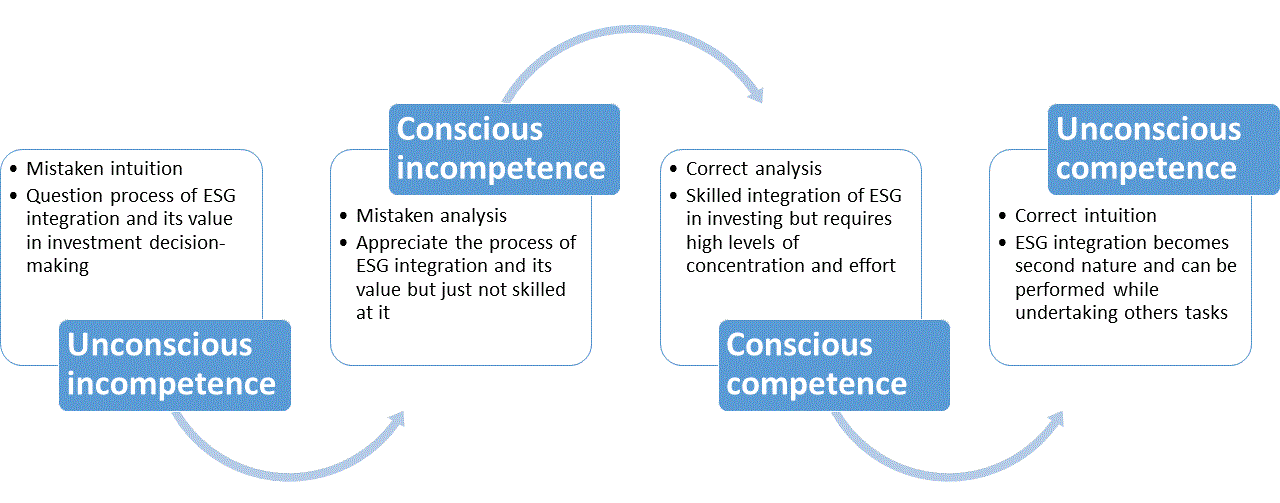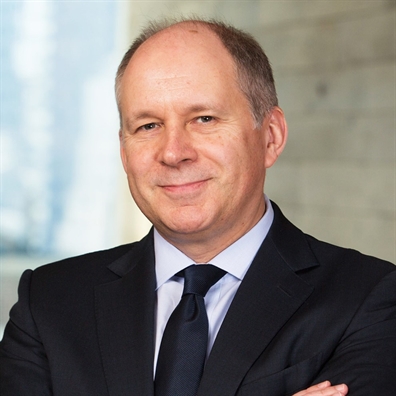The global ESG scrabble
A survey released in January 2020 by Macquarie Infrastructure and Real Assets (MIRA) reveals that investors value the benefits of environmental, social and governance (ESG) integration in investment decision-making. Most aim to bring more resources to ESG.
Sustainability consultant ERM’s survey of private equity investors, released in October 2020, also shows that ESG considerations offer value creation and investment opportunities during the next 3-5 years.
However, many institutional investors and asset managers wrestle with how to initiate and sustain an ESG programme in asset allocation, portfolio management and securities selection.
- This feature first appeared in IJGlobal Magazine – to access it in full, CLICK HERE...
IJGlobal spoke with infrastructure investors about their ESG policies, strategies and practices in the investment cycle – from fund structuring to fundraising and acquisition to divestment.
Each has a responsible investment policy with a responsible investment team that interacts regularly with transaction and asset management teams. Each insists that incorporating sustainability into resource allocation and decision-making is a journey.
Self-reflection is a beautiful thing
Chris Leslie (pictured right), MIRA’s global head of sustainability and executive chair for MIRA Americas, draws on psychology’s 4 stages of competence to frame the learning process about the skill and value of ESG integration.
“We take an integrated approach to ESG and sustainability,” he says. “The first stage of ESG integration – unconscious incompetence – is when you don’t know what you don’t know and you wonder how it all works.
“Think of driving a car. We start out terrible yet we don’t even know we’re terrible. Compare that to the last stage – unconscious competence – where we get in the car and just drive, not really thinking about the clutch as we shift gears.”
“We have a good sense of what we need to do and how to do it,” confides MIRA’s New York-based global head of sustainability. “But we know we are on a journey and haven’t done it all yet. The task lies in continuing to educate our people on how to do things and the opportunities inherent in sustainability. We have been managing ESG risks for many years and it’s through understanding the risks that these opportunities become clear.”
ESG integration is a journey in 4 stages:
Linking macro with the micro
A trend among investors is to have responsible investment policies at the asset-class level, including public equities, passive investing and infrastructure. Infrastructure investors require processes to identify ESG trends at the sector (oil and gas, transport, power, water, etc) and geographical levels. The motivation is to assess the scale and scope of the ESG risks and opportunities for quicker, more effective decision-making. In turn, the evaluation of micro and macro ESG issues will drive the innovation of the investor’s business model, product development and value proposition.
“At BlackRock Alternatives Investors – our alternatives platform – we continue to remain focused on developing ESG tools, processes and procedures to ensure our approach to ESG is embedded in our business and we have a strong governance framework around it,” says Teresa O’Flynn (pictured left), managing director and global head of sustainable investing for BlackRock Alternatives Investors.
When Jon Collinge joined alternative asset management HRL Morrison & Co in April 2018, the firm didn’t have a dedicated sustainability team. While the firm had long been implicitly considering ESG issues in its investment decision-making, client expectations about ESG had matured such that the entire investment cycle was under scrutiny. The heightened scrutiny necessitated a more structured sustainability programme.
Twelve years at a Sydney-based real asset developer, including managing the sustainability of the investment management business, taught the Morrison & Co sustainability director to envision fund-specific sustainability strategies. “The more generic you are with your sustainability ambitions, the less likely you will get engagement,” says Collinge. “If I pitch a generic sustainability programme to fund managers, without even touching on their specific assets, the portfolio managers would eventually realise they don’t have to commit to anything.”
Collinge’s most important early win with this approach was gaining approval in December 2018 by Utilities Trust of Australia (UTA) trustee board for its sustainability strategy, including goals, objectives and targets. He adds, “Nobody likes a target more than a fund manager, especially when we can use those targets in KPIs connected to remuneration.”
In comparison, each investment strategy including infrastructure has its own ESG policy and integration statement at BlackRock, which has developed a comprehensive ESG toolkit, including detailed ESG due diligence questionnaires. A senior investment professional drives the ESG agenda within each business and ensures it is part of the investment approval.
O’Flynn adds: “We also include ESG risk dashboards in our portfolio reviews with our risk team and chief investment officer portfolio review process.”
Filling the coffers
The dynamic between allocators and infrastructure investment managers has intensified during the past 5 to 10 years. Many pension funds in Australasia and Europe and some in the US and Asia have long been asking whether potential general partners considered ESG factors in investment decision-making. The manager, most times, would dutifully respond, “Yes, most definitely” and the ESG box would be ticked.
“Now I’m having 2-hour deep dives to explain our approach,” says Mary Nicholson of MIRA, which manages Macquarie Asia Infrastructure Fund 2 – the 2020 GRESB infrastructure leader of Asia and Oceania and Macquarie European Infrastructure Fund 4 – the most improved European fund. “There’s been a steady evolution. This movement began in Europe and Australia, but we’re seeing real change in Asia and the Americas as well.”
MIRA’s London-based head of responsible investment (pictured right) remarks: “Investors are increasingly interested in case studies about how project companies have implemented ESG strategies and improved their performance. What once used to be a quick validation that we considered ESG as part of our investment approach then evolved into questions about whether or not we participated in ESG benchmarks like GRESB. Now investors want us to walk them through the details of a GRESB report about a particular sector, which represents a huge change in the level of interest.”
GRESB is an investor-led rating organisation specialising in real assets. It rates real estate and infrastructure funds and their underlying assets on ESG performance. GRESB management and Summit Partners announced in November (2020) that they were collaborating to acquire GRESB from its US parent Green Business Certification Incorporated (GBCI).
“Super funds and other institutional investors have even commented that in our fundraising pitch the ESG slides should be further forward in the slide deck,” adds Collinge. “However, some LPs still don’t consider [ESG] which is surprising.”
Morrison & Co Growth Infrastructure Fund in August (2020) reached its third and final close with A$580 million ($416 million). “ESG was a hot topic [during the fundraising],” comments Collinge. LPs were concerned with climate change, health and safety, and diversity and inclusion, especially gender, notes the sustainability director.
Acquiring the asset
Infrastructure investors have evolved more sophistication in ESG screening and evaluating the opportunity set, conducting due diligence and closing the transaction.
Regardless of the asset class, discerning which ESG issues are material to an asset’s value is more art than science today. A touchstone of ESG integration is standardising the collection, analysis and reporting of material ESG data. While initiatives to bring a consistent approach to ESG data have proliferated, infrastructure investors must prioritise some over others.
Investors are eyeing the Task Force on Climate-Related Financial Disclosures (TCFD), created in 2015 by the Financial Stability Board. TCFD is developing consistent climate-related financial risk disclosures for use by companies, banks and investors in providing information to stakeholders.
“Access to ESG data is often cited as a hurdle in private markets investing,” says O’Flynn. “I think the issue is more ESG data has to be manufactured in private markets, including in infrastructure. It’s an intensive raw data-gathering exercise.”
Morrison & Co’s Collinge (pictured left) estimates that ESG integration in the infrastructure asset class is generally 5 to 7 years behind the use of ESG factors in real estate investment. He says part of the reason is that real estate across a limited number of subsectors, including industrial, office, commercial, residential and mixed, is much more comparable than infrastructure. “Your airport is not anywhere near the same as the airport next door,” Collinge says.
He emphasizes Australia’s history of sustainability ratings in real estate, dating back to the mid-to-late 1990s. He credits the simple combination of sustainability ratings and rankings as instrumental to motivate decision-makers to change material business practices. As the early systems evolved, the “competitive spirit” of chief executives drove a desire to climb the rankings.
Jonathan Waite, responsible investment manager at APG Asset Management Asia, agrees that the real estate asset class offers a relatively easier pathway to ESG integration compared to infrastructure. The more homogenous nature of real estate assets and a large number of assets allows for more robust data analysis.
“While someone in the [real estate] industry would likely say the difference between a logistics centre, commercial mall and residential block complicates ESG integration,” Hong Kong-based Waite says, “the ESG issues across those assets are quite similar.”
The breadth of coverage by GRESB supports the notion that infrastructure generally lags real estate in its uptake on ESG. The investor-led ESG rating organisation specialising in real assets analysed responses from 118 infrastructure funds, 426 infrastructure assets and 1,354 facilities during its 2020 cycle. In comparison, GRESB assessed 1,229 real estate portfolios worth more than $4.8 trillion assets under management.
Waite, however, emphasises the comparison with real estate can be overwrought. The amount of ESG data in infrastructure may never approach that of real estate. “Look around Hong Kong and count the number of buildings. Then think about the number of investable infrastructure assets in comparison.”
Technology may help bridge aspirations with reality. “We believe that technology has an important role to play in helping extract and report ESG data in an efficient way for private markets including infrastructure investing,” notes O’Flynn, who has been with BlackRock for nearly a decade. “This is something we are very focused on via our eFront platform.”
Conducting due diligence
APG’s responsible investment team has a role across the infrastructure investment cycle. Strategic and tactical discussions about ESG routinely happen between Hans-Martin Aerts, managing director and head of infrastructure investments for APG Asia Pacific, and APAC head of responsible investment and governance YK Park, along with Waite, who is responsible for private markets.
Broader ESG issues may weigh heavier early in the cycle as portfolio managers gather information about the investment landscape. As the deal team’s pipeline narrows, a strategic conversation about climate change may evolve into a balanced discussion about the physical risks of climate change in a particular location and climate change’s impact on a subsector’s business model.
“What might the long-term impact of autonomous or electric vehicles be on tollways?” asks Waite (pictured right). “The new vehicles will still drive on the same road as today’s cars.”
While conducting due diligence on a potential investment, APG undertakes an ESG assessment. Waite notes 2 important decisions. First, the responsible investment team in coordination with the deal team determines the scope of the assessment. Not all ESG issues materially affect an infrastructure asset’s long-term performance and valuation. Here materiality is the driving factor. Second, the team chooses whether to manage and execute the ESG study internally or externally.
Closing the deal
Valuation is the confluence of narratives and numbers. Sometimes buyers have heard the story and like what they hear – so much so that it sends a target company’s offer price into the stratosphere. Infrastructure investors must decide the degree to which a target company’s anticipated ESG performance is already embedded in the offer price. In many cases, strong ESG performers epitomise the canard that a great company isn’t always a great investment.
A new climate change investment framework by Asian Infrastructure Investment Bank (AIIB) and Amundi allows investors to measure issuer performance against the Paris Agreement’s 3 objectives. Investors can systematically acquire an equity interest in A-list issuers, or those that are already performing well on all 3 objectives, and B-list issuers, or those that are moving in the right direction but are not yet A-list issuers. The framework encourages the integration of climate change risks and opportunities into business practices by targeting the engagement of B-List issuers to help them transition to A-List credentials.
APG’s responsible investment team either approves or disapproves the investment. “We do have the power to disapprove if the investment doesn’t meet our criteria,” says Waite. The Dutch pension fund manager identifies conditions to close and recommendations to enhance ESG strategy, management and performance. Those conditions and recommendations form the tactical backbone of APG’s monitoring of an engagement plan with the new portfolio company.
Being a good steward
Driven by the demands of clients, general partners are increasingly requiring portfolio companies to collect and report on ESG strategy and performance.
BlackRock Alternative Investors embeds ESG data collection into the underlying asset management agreements to manage and track ESG performance. “ESG reporting is a key element of our onward reporting to our clients,” remarks O’Flynn. “Overall, our approach can be broadly summarised under a 3-part framework: transparency; investment process or the how; and insights, that is ESG data or the what.”
APG shares a similar approach to portfolio companies.
“ESG integration is not about making judgements across all infrastructure but about comparing the ESG risks and opportunities among comparable facilities or assets,” says Waite. “The granular details matter and we’re always looking at a comparison of investments we’ve already held, often using GRESB data.”
He adds: “A cornerstone of our conditions is to get our portfolio companies to report their ESG strategy and performance or at least have a plan to report within 12 to 18 months.”
Although infrastructure funds may hold securities at the corporate- and project company-level upwards of 10 or more years, responsible investment teams hit the ground running. Many have adopted the M&A industry’s practice of developing 100-day implementation plans for portfolio companies.
Nicholson and her colleagues work with the new portfolio company, such as hyperscale data centre platform AirTrunk, to achieve early wins that are often identified during due diligence. Beyond this initial transition period, the responsible investment team works directly with portfolio companies to embed practice and share sustainability initiatives among peers.
MIRA’s Leslie, who has been with Macquarie for nearly 3 decades, highlights the opportunity assets like data centres have to improve their performance on energy and water efficiency. “Many of our existing assets in the sector utilise renewable energy and deploy methods that massively reduce the amount of water in the cooling process,” he says. “We share those technologies among our businesses.”
The executive chairman of MIRA Americas also underscores the knowledge sharing that is occurring within the industry about the circular economy. Apple is working on better designing the iPhone’s end-of-life. In a similar vein, MIRA portfolio companies in the roads subsector are drawing from experiences in India and France where other MIRA investments are recycling asphalt, says Leslie.
Strategically, APG like many investors also has a series of evolving engagement themes across asset classes. Waite mentions working with portfolio companies to enhance their understanding and management of climate risk and ESG data collection, often advocating the deployment of an environmental and social management system at portfolio companies.
Goodbyes are never easy
A fortunate vendor works with a portfolio company to implement fully their ESG policies, strategies and plans. A buyer across the table values the target company’s executed sustainability programme and assesses that either the growth of cash flow will accelerate, cost of capital will decrease or asset utilisation will improve. Since ESG initiatives may take years to achieve results, the target company normally has not fully executed its plans when it goes on the auction block.
Responsible investment teams are increasingly contributing to the target company’s full potential plan. They can engage the board to approve the sustainability programme and implementation plan to attract investors that incorporate ESG considerations. Teams can help M&A advisers understand how to position target companies in terms of its ESG evolution and anticipated outperformance.
Brookfield owns Dalrymple Bay Infrastructure (DBI) – the world’s largest metallurgical coal export terminal, handling 15% of global metallurgical coal in 2019. The Canadian asset manager raised A$656 million from an IPO in December (2020), valuing DBI at A$1.28 billion. Brookfield retained 49% of the company, which began trading on ASX from 10 December. The IPO prospectus includes a 7-page section on ESG. The section comprises DBI’s ESG and governance frameworks, sustainability strategy, and performance measures about worker safety and greenhouse gas emissions.
“Although in many cases we may not have gone as far as we might have wanted to during our period of ownership, we are positioning assets for sale by highlighting ESG opportunities in progress that could be realised by the purchaser,” says Leslie. “Often among those, for example, is a change in management culture. We need to educate potential purchasers on those types of value-add opportunities, which may not be immediately obvious to them.”
Moving forward
ERM’s recommendations for private equity investors to realise sustainability’s potential are:
- setting a strategic vision and fostering a culture that sees ESG as a significant value creation opportunity
- moving due diligence from compliance to ESG best practice to generate superior returns
- ensuring companies become ESG strong during ownership to benefit from a higher exit multiple
- establishing the firm’s ESG investment strategy and process for identifying ESG market trends
MIRA’s Nicholson expects that, in addition to decarbonisation and the energy transition, the nexus between infrastructure and the Sustainable Development Goals (SDGs) will climb public and private sector agendas.
O’Flynn anticipates the standardisation of ESG information and disclosure in public and private markets to accelerate. The deadline is 31 December (2020) to respond to the IFRS Foundation’s public consultation on the role it might play in the convergence of globally recognised sustainability reporting.
“In the meantime, we expect companies to accelerate their efforts to publish sustainability data and contextual information under existing frameworks and standards,” says the BlackRock managing director.
Climate change will continue to be an important focus for APG. The investment team anticipates improving their analytical capacities of climate risk. Waite adds: “We aim to become a lot more data-driven about the physical risks of climate change and their impact on our current and future holdings.”
Infrastructure investors are also publicly consulting on TCFD until 27 January 2021. The task force aims to understand the forward-looking climate data that asset owners, investment managers, banks and other financial institutions disclose and use.
Request a Demo
Interested in IJGlobal? Request a demo to discuss a trial with a member of our team. Talk to the team to explore the value of our asset and transaction databases, our market-leading news, league tables and much more.




